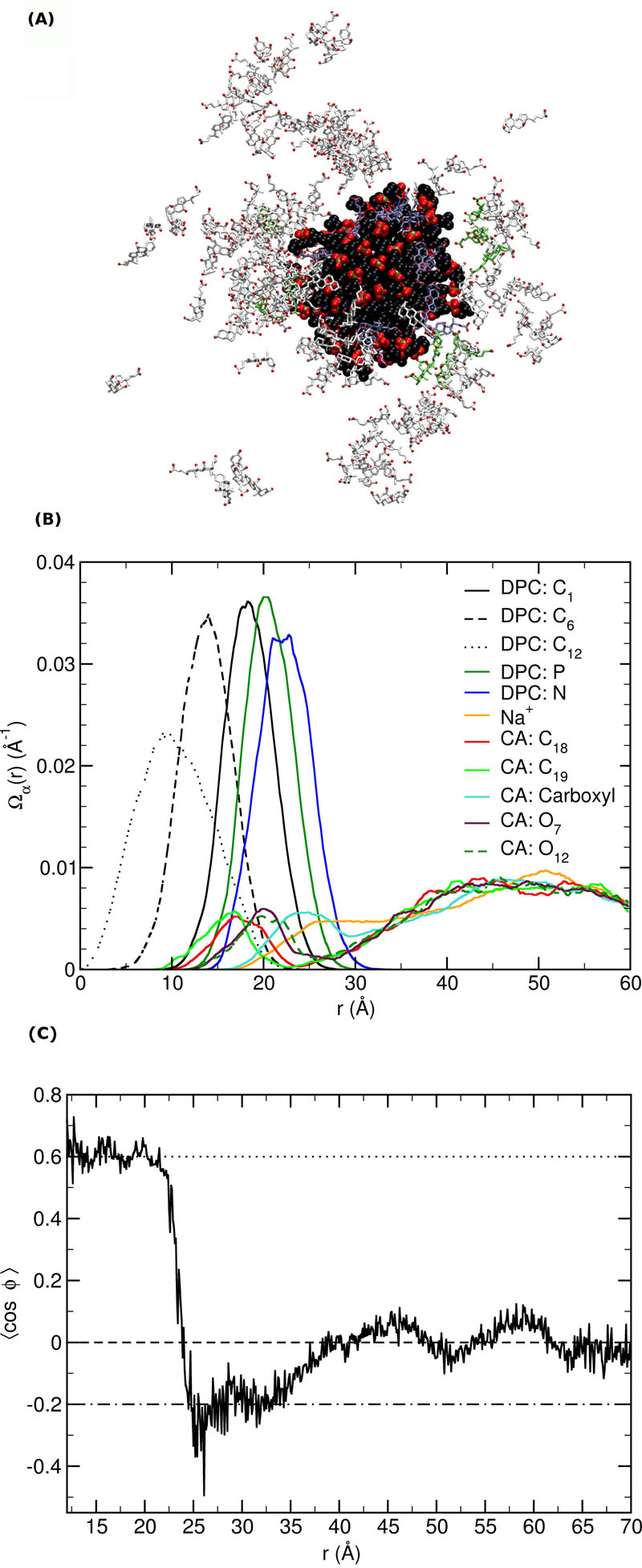|
Structure and
Dynamics of Cholic Acid and Dodecylphosphocholine-Cholic Acid Aggregates
Bile acids are powerful detergents that emulsify and solubilize lipids, vitamins, cholesterol and other molecules in the biliary tract and intestines. It has long been known that bile acids form soluble mixed micelles with lipids. However, the detailed thermodynamic and structural properties of these micelles are not fully understood. This study sheds light on this issue based on results from multiple molecular dynamics simulations of cholic acid (CA) and dodecylphosphocholine (DPC) mixed micelles. We found that CA molecules form aggregates of up to 12 monomers with a mean size of 5-6. In agreement with several previous simulations and earlier predictions, the overall shape of these CA clusters is oblate disk-like such that the methyl groups point toward the core of the aggregate and the hydroxyl groups point away from it. The self-aggregation behavior of the CA clusters in the DPC-CA mixture is similar to the pure CA. Furthermore, the sizes and aggregation numbers of the DPC-CA mixed micelles are linearly dependent on CA molarity. In agreement with the radial shell model of Nichols and Ozarowski [Nichols, J. W.; Ozarowski, J. Biochemistry 1990, 29, 4600]1, our results demonstrate that CA molecules form a wedge between the DPC molecules with their hydroxyl and carboxyl groups facing the aqueous phase while their methyl groups are buried in and face the hydrocarbon core of the DPC micelle. The DPC-CA micelles simulated here tend to be spherical to prolate in shape, with the deviation from spherical geometry significantly increasing with increasing CA:DPC ratio.
(A) Snapshot of a DPC-CA micelle (center) and CA aggregates taken from simulation B. DPC molecules are depicted in space-filling model colored in black (carbon), red (oxygen), blue (nitrogen) and olive (phosphate). The CA molecules adsorbed onto the DPC micelle are colored in ice blue (carbon) and red (oxygen); those in the secondary shell (defined as non-adsorbed CA molecules containing a heavy atom within 8 Å of any DPC heavy atom) are in green and red, whereas the rest are colored in gray. Water, counter ions and hydrogen atoms are not shown for clarity. (B) The probability distribution of selected atoms as a function of their distance from the center of mass of the mixed micelle.(C) and bond orientations as a function of distance from the center of mass of the mixed micelle. |
